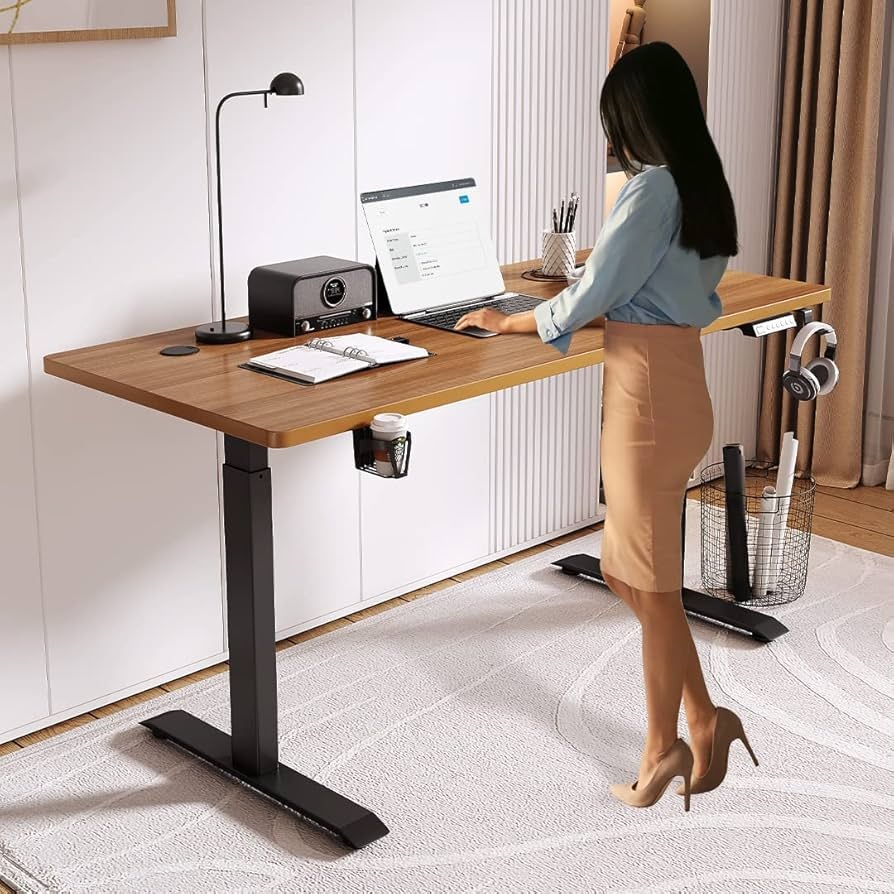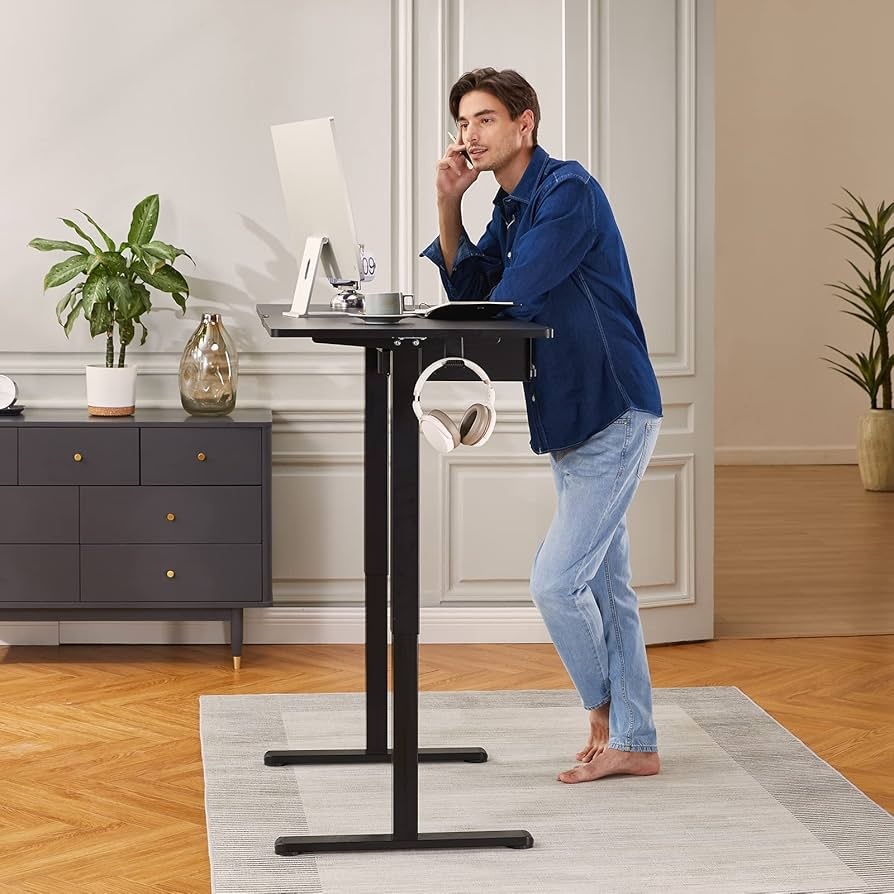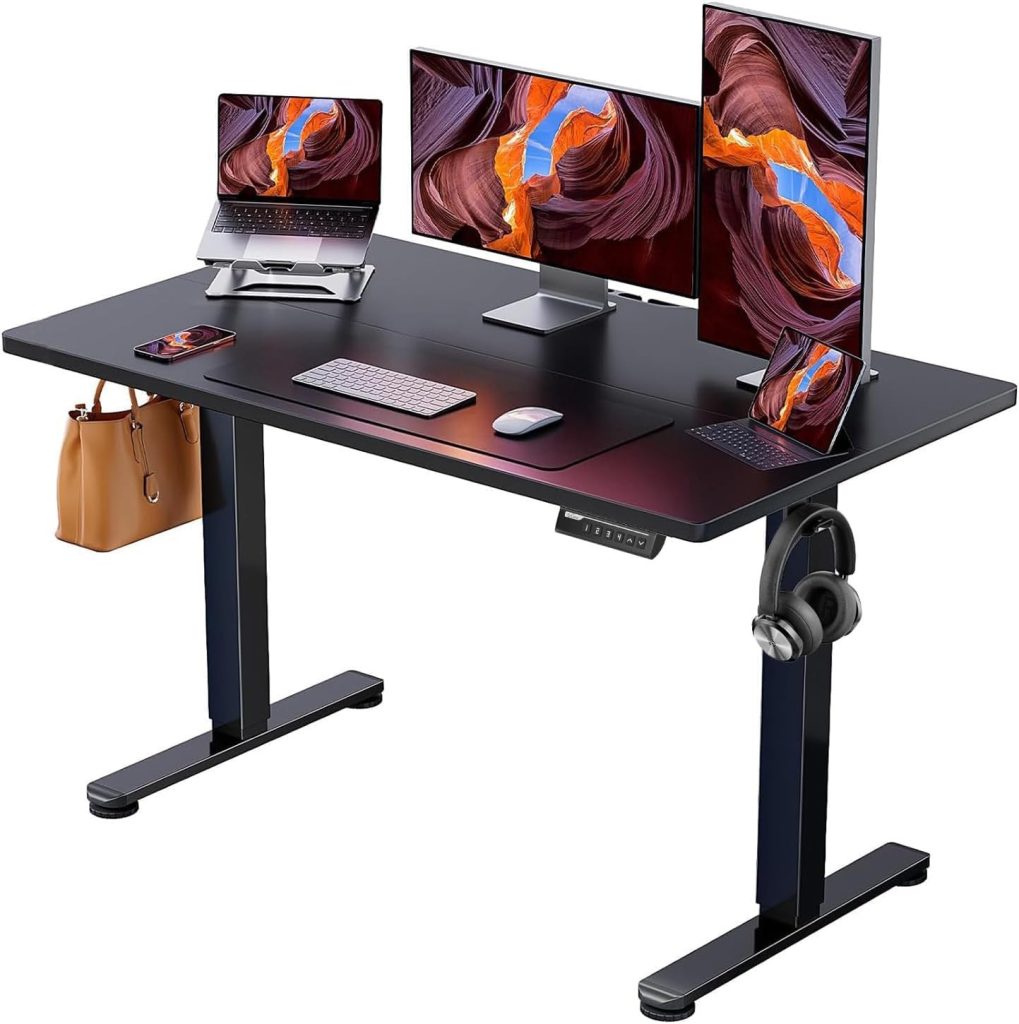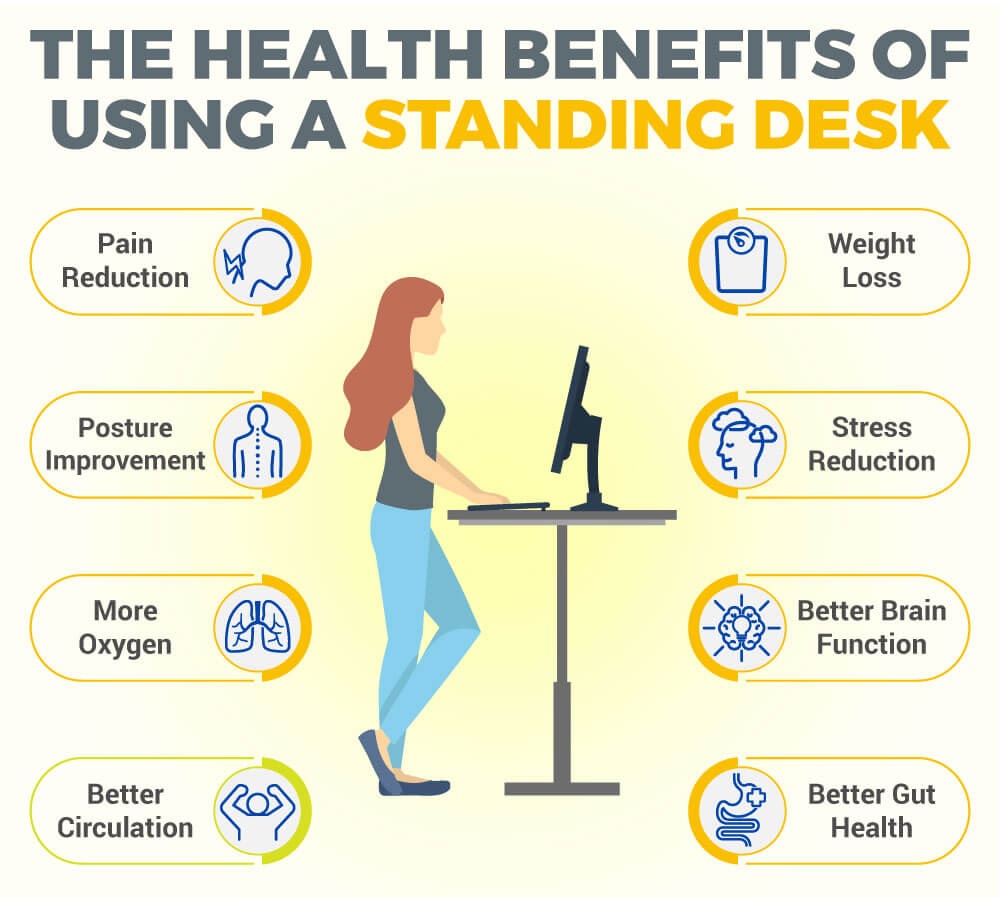Introduction: the rise of the standing desk craze
If you’ve worked in an office-or scrolled through a few remote work TikToks-you’ve probably seen the standing desk trend take over. What started as a niche idea for ergonomic enthusiasts has exploded into a mainstream work accessory, rivaling the office chair as a “must-have” item. But as we move into 2025, the big question remains: are standing desks really worth the hype when it comes to productivity, or are they just another expensive gadget in disguise?
Advocates claim that standing desks help you stay focused, burn a few extra calories, and even prevent the dreaded afternoon slump. Critics, on the other hand, argue that simply standing doesn’t guarantee better work performance. So, where’s the truth?
In this deep dive, we’ll explore the benefits of standing desks at work, the science behind focus and posture, the latest adjustable standing desks, and whether investing in one is the productivity power-up your 2025 self actually needs.
Why standing desks became so popular
The standing desk isn’t exactly a 2025 invention. In fact, history nerds might be surprised to know that famous figures like Winston Churchill, Ernest Hemingway, and even Thomas Jefferson were known to write and work at elevated desks. But in the modern era, the surge in popularity is tied to three major shifts:
- Remote work and home offices: With millions of people working from home since 2020, creating a healthier and more engaging workspace has become a priority. A standing desk often feels like a small but powerful lifestyle upgrade.
- Health concerns about sitting all day: You’ve probably heard the phrase “sitting is the new smoking.” While a bit dramatic, the truth is that prolonged sitting has been linked to back pain, poor posture, and increased risk of lifestyle-related conditions. Standing desks are seen as an antidote.
- Tech-friendly furniture boom: Furniture is no longer just static. From smart desks with memory presets to whisper-quiet motors in the latest electric standing desk models, innovation has made the transition from sitting to standing effortless.
In short, standing desks have become more than just furniture-they’re a symbol of productivity, wellness, and modern work culture.
The science behind standing desk benefits
So, do standing desks really make you more productive, or is it just a case of placebo power? The science gives us some interesting insights.
Better posture and reduced discomfort
Long hours at a traditional desk can lead to stiffness, back pain, and those “why does my neck feel like a pretzel?” moments. Research suggests that alternating between sitting and standing can reduce musculoskeletal discomfort, especially in the lower back and shoulders. While an ergonomic standing desk won’t magically fix bad posture, it encourages movement and better alignment.
Increased energy and focus
Studies have shown that people using sit stand desks often report higher energy levels and reduced fatigue throughout the day. Standing encourages subtle body movement-think micro-shifts in weight or slight pacing-that can improve circulation and help you avoid the dreaded 3 p.m. slump.
Possible productivity gains
Here’s the part everyone cares about: do standing desks actually make you work better? A study published in the British Medical Journal found that employees using adjustable standing desks reported improved productivity, focus, and overall job satisfaction compared to those stuck sitting. The catch? Productivity gains were often modest, and the real win came from improved comfort and engagement rather than typing speed or output.
Calorie burn: a small bonus
Let’s clear this up: standing all day isn’t going to replace your gym membership. However, you do burn slightly more calories compared to sitting. On average, standing burns about 88 calories per hour versus 80 calories while sitting. Over time, that small difference adds up-but the bigger benefit is staying active rather than static.
The verdict from science? Standing desks alone won’t turn you into a productivity machine, but combined with good ergonomics and movement breaks, they can absolutely improve your work experience.
Sit stand desk benefits: finding the balance
Here’s the truth bomb: standing desks aren’t about standing all day. In fact, doing so can be just as uncomfortable as sitting nonstop. The real magic lies in alternating between sitting and standing-hence the rise of the best sit to stand desks on the market.
Why alternating works best
Our bodies love variety. Alternating between sitting and standing helps reduce stiffness, avoids leg fatigue, and keeps energy levels more stable. Experts recommend the 20-8-2 rule: for every 30 minutes, sit for 20, stand for 8, and move/stretch for 2. This balance keeps muscles engaged without overloading them.
Improved comfort and ergonomics
An adjustable standing desk makes this switching seamless. Most modern models-especially electric standing desks-come with programmable height presets. With just a button press, you can glide from “focus mode” sitting to “presentation-ready” standing without breaking your workflow.
Productivity sweet spot
Studies suggest that the sit stand desk benefits are strongest when used intentionally. For example:
- Morning: Start standing to boost energy and alertness.
- Afternoon slump: Switch back to standing after lunch to avoid post-meal sluggishness.
- Late evening: Sit comfortably if you’re wrapping up with light tasks or creative work.
This rhythm ensures you’re not just working longer, but working smarter.
The best standing desks in 2025
If you’ve decided that a standing desk might be your next productivity investment, the good news is that there’s no shortage of options. From budget-friendly basics to high-tech setups, here’s a breakdown of the best standing desks in 2025.
1. Electric standing desk
The star of 2025 is undoubtedly the electric standing desk. With whisper-quiet motors, digital height presets, and even built-in USB charging ports, these desks make switching between positions effortless. Some premium models now include anti-collision sensors and companion apps that remind you when it’s time to stand.
Best for: Professionals who want convenience, speed, and tech integration.
2. Ergonomic standing desk
These are designed with posture and comfort in mind. Think curved edges, adjustable keyboard trays, and monitor arms that prevent you from hunching over. An ergonomic standing desk is perfect if you’re prone to back or neck pain and want a setup that supports long work sessions.
Best for: Anyone who values long-term comfort and spinal health.
3. Adjustable sit-stand desks
These desks allow manual or electric adjustment, and they’re often more affordable than premium electric models. They may not come with all the bells and whistles, but they offer the core sit stand desk benefits of flexibility and posture variety.
Best for: Home office users or budget-conscious buyers who want versatility.
4. Compact standing desks for home offices
Not everyone has the luxury of a big workspace. In 2025, we’re seeing a rise in compact desks that fold, roll, or fit neatly into small apartments. These standing desks for home office setups prove you don’t need a giant corporate space to go ergonomic.
Best for: Remote workers in apartments, students, and hybrid employees.
5. Premium “smart” desks
At the high end, you’ll find futuristic desks that track your standing time, sync with fitness apps, and even integrate with AI assistants. Some models let you control desk height with voice commands-yes, you can literally say, “Desk, take me higher.”
Best for: Tech lovers who want their furniture to be as smart as their phone.
Standing desk for home office: creating your perfect setup
Working from home has blurred the line between comfort and productivity. A kitchen table might work for a quick email, but for a full day of focused tasks, you need a setup that supports your body and your workflow. That’s where a standing desk for home office comes in.
Space-friendly options
Not all of us have the luxury of a full office room. Luckily, many 2025 designs are tailored for small spaces. Compact desks with collapsible frames or rolling bases let you tuck your workstation away when not in use-perfect for apartments and shared living.
Pairing with the right accessories
A desk alone won’t transform your productivity. Consider pairing your desk with:
- Anti-fatigue mats – to reduce leg strain while standing.
- Ergonomic chairs – for the times you do sit, comfort matters.
- Monitor arms – to keep your screen at eye level and reduce neck strain.
- Cable management kits – because no one wants spaghetti wires ruining their clean setup.
Personalization for productivity
Your home office should feel like yours. From LED lighting and plants to a second monitor, small upgrades make your workspace inviting. A well-designed ergonomic standing desk setup blends productivity with personal comfort, making you actually want to sit-or stand-down to work.
Work-life balance boost
A home office standing desk can also help you set boundaries. When your desk moves up, it signals “work mode on.” Lower it down and walk away? That’s your brain’s cue that the workday is over. Think of it as a physical switch for your productivity mindset.
Standing desk benefits vs limitations: the honest truth
Standing desks get a lot of hype, but like any productivity tool, they’re not a one-size-fits-all solution. Let’s break it down honestly.
The benefits of standing desks at work
- Improved posture and reduced back pain – Alternating positions helps prevent the slouch-and-hunch cycle that sitting often causes.
- Boosted energy levels – Many users report fewer afternoon crashes and more consistent focus throughout the day.
- Flexibility – With adjustable standing desks, you control your workflow and comfort.
- Encourages movement – Standing makes it easier to stretch, shift, or even walk a few steps while thinking.
- Home office upgrade – A standing desk feels like an investment in your health and productivity, not just furniture.
The limitations
- Standing fatigue – Too much standing can cause sore feet, knees, or even varicose veins over time.
- Learning curve – It takes time to figure out the right balance between sitting and standing.
- Price point – The best standing desks (especially electric ones) can be pricey compared to a regular table.
- Not a magic bullet – A standing desk won’t automatically double your productivity-you still need good habits, breaks, and ergonomics.
The balanced truth
Think of a standing desk as a tool, not a cure-all. It works best when combined with ergonomic accessories, smart work habits, and regular movement. If used thoughtfully, the sit stand desk benefits can absolutely outweigh the drawbacks. But if you expect it to turn you into a superhuman worker overnight, you might be standing in disappointment.
Conclusion: standing desks 2025 – worth it or just hype?
So, after all the research, comparisons, and ergonomic deep dives-what’s the verdict? Are standing desks in 2025 truly worth the hype for productivity?
The answer is: yes, but with balance. A standing desk isn’t a magic bullet that will transform you into the world’s most efficient worker overnight. However, when used correctly, the benefits of standing desks at work are undeniable. From reducing back pain and boosting energy to improving focus and comfort, they offer genuine value in both home and office environments.
The key lies in variety. An adjustable standing desk-especially the modern electric standing desk models-lets you switch between sitting and standing seamlessly, keeping your body and brain engaged. Pair that with smart accessories like ergonomic chairs, monitor arms, and anti-fatigue mats, and you’ve got a setup that supports your productivity instead of draining it.
If you’re setting up a standing desk for home office, think beyond the desk itself. Make the space inviting, personalized, and practical. Your workspace should motivate you to do your best work, not just serve as a trendy backdrop for video calls.
Ultimately, standing desks aren’t just about hype-they’re about habits. Use them wisely, listen to your body, and they’ll repay you with healthier workdays and (hopefully) fewer chiropractor visits. So, in 2025, if you’re ready to upgrade your work life, a best sit to stand desk might just be the smartest investment you can make for your productivity.
FAQs about standing desks in 2025
1. Are standing desks actually good for productivity?
Yes-when used properly. Studies show that standing desks can improve comfort, energy levels, and even job satisfaction. While they won’t double your output, they can help you stay focused longer by reducing fatigue and stiffness.
2. How many hours a day should you stand at a standing desk?
Experts recommend alternating between sitting and standing. A good balance is to stand for about 2–4 hours total in a workday, broken into shorter intervals. The 20-8-2 rule (20 minutes sitting, 8 standing, 2 moving/stretching) is a great guideline.
3. Do I still need an ergonomic chair if I have a standing desk?
Absolutely. Even the best sit to stand desks aren’t meant for all-day standing. A high-quality chair ensures comfort when you’re seated, so your workspace remains flexible and supportive.
4. What type of standing desk is best for a home office?
If you’re tight on space, a compact adjustable standing desk for home office is ideal. If budget allows, an electric standing desk with memory presets offers convenience and ease of use. For health-focused setups, an ergonomic standing desk with add-ons like monitor arms is the way to go.
5. Are standing desks worth the money in 2025?
For most remote workers and professionals, yes. While not cheap, the standing desk benefits-better posture, higher comfort, and long-term wellness-make them a solid investment. Think of it as health insurance for your workday.







